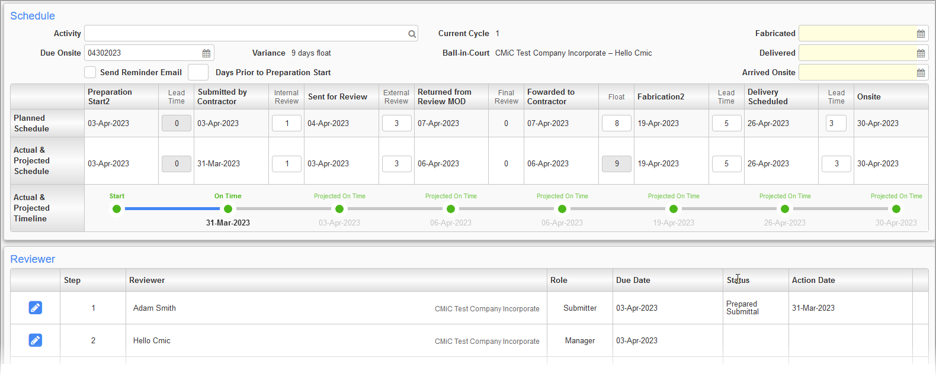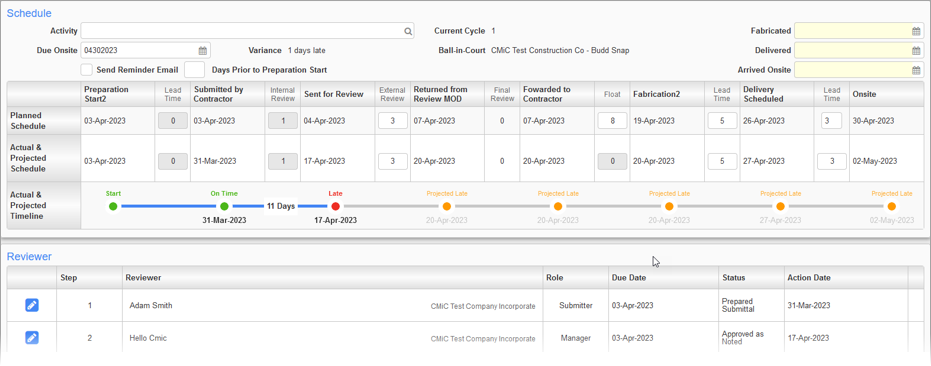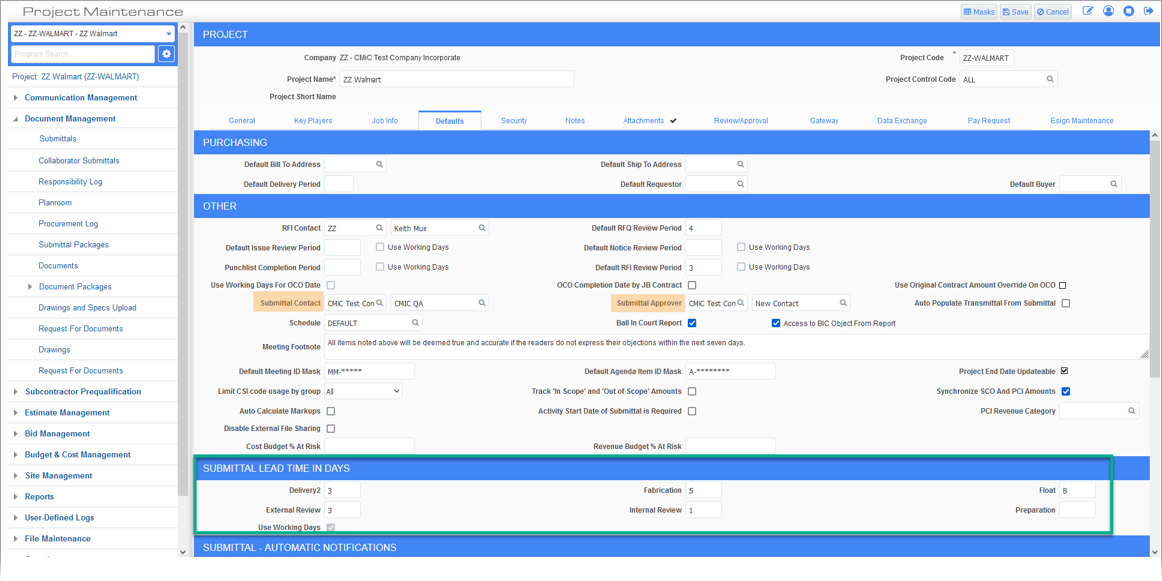Why is it Useful?
CMiC has completed several enhancements to Submittals. These updates include the following:
NOTE: These features were released in Patch 17 under Issue 22.65530.
How Does it Work?
Closed Field in Header
We added a Closed field to the header section in Submittals.

Submittals; standard Treeview path: CMiC Field > Document Management > Submittals
This field will populate with the date when the submittal is closed (i.e., Status field contains a value with a status class of "Closed"). Reopening a submittal (i.e., Updating a record so the Status field contains value with a status class that is not "Closed") , will clear the date in this field.
Project Schedule Row in Schedule Section
We added an additional row in the Schedule section to allow the Projected schedule to be updated independently of the Planned schedule.



In the new Projected Schedule row, once an Action Date has been entered (i.e., the review process has begun), the Float value becomes read only and is calculated as the difference between the Planned Fabrication date and the Projected or Actual Forwarded to Contractor date.

If the Projected or Actual Forwarded to Contractor date is after the planned Fabrication date - the Float value would be zero and the submittal would be projected late. The variance would show the difference between the Projected Onsite date and the Due Onsite date.

Schedule and Calculation Notes
-
Defaults at the project level determine whether the schedule uses working days or calendar days, as well as the default lead teams for the schedule.
-
Whether a particular date is considered a “working day” can be controlled through the project calendar (*provided the user has the appropriate privileges).

Project Maintenance; standard Treeview path: CMiC Field > File Maintenance > Project Maintenance – Defaults tab
-
Planned Schedule – Beginning with the Due Onsite date, the schedule calculates backwards, applying the working days setting and lead time values to determine when the review process should begin, in order to conclude in good time.
-
Projected Schedule – Based on the most recent Action Date and the subsequent Lead Time values – dates are estimated for the remaining stages of the submittal. If the process is behind schedule, these delays will eat into the float period. If there is no remaining float, additional delays will push back fabrication and delivery dates resulting in the submittal being projected as late. The variance will reflect the difference between the Due Onsite date and the projected Onsite date.
For more information about using submittals, refer to CMiC Field - Submittals.
To learn more about some of the latest features released in this patch, return to Patch 17 Highlights.